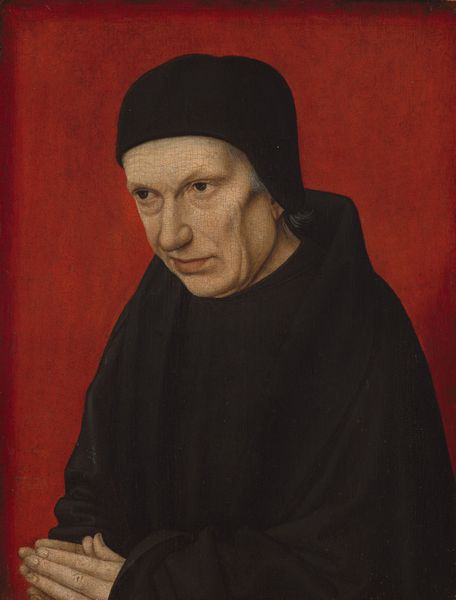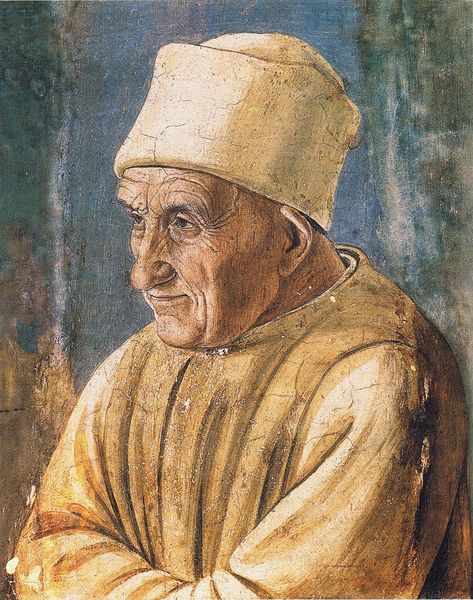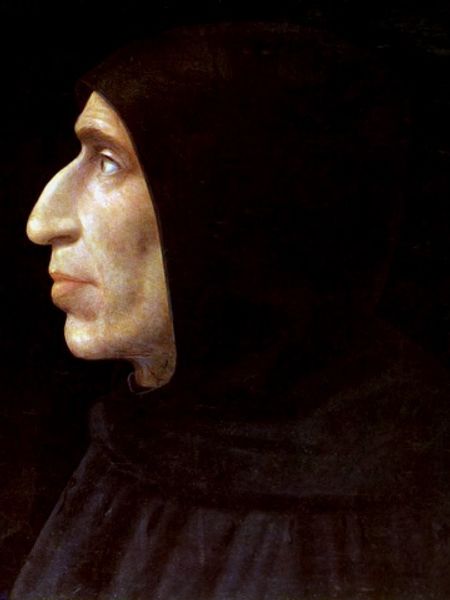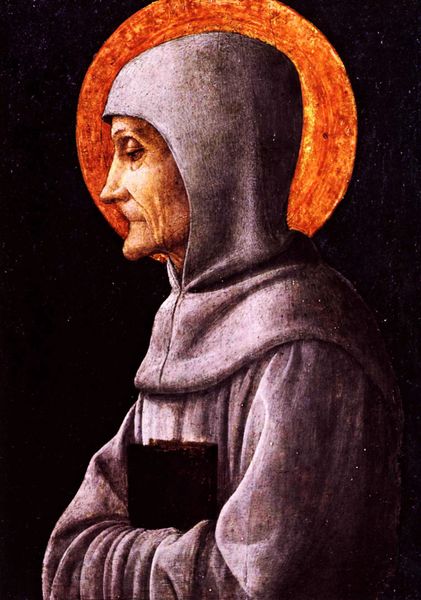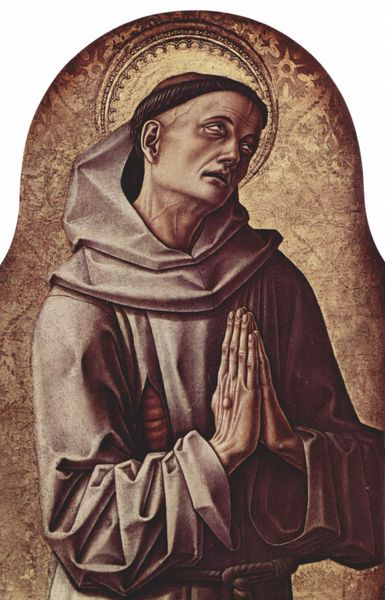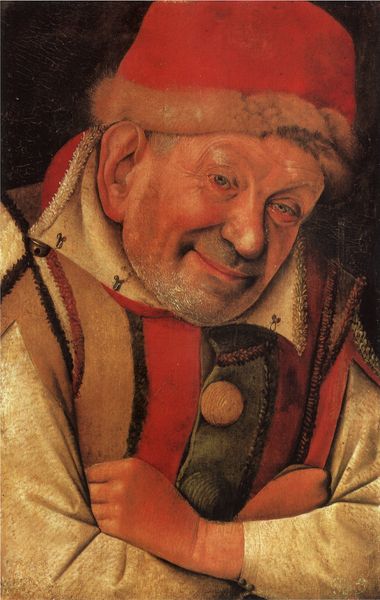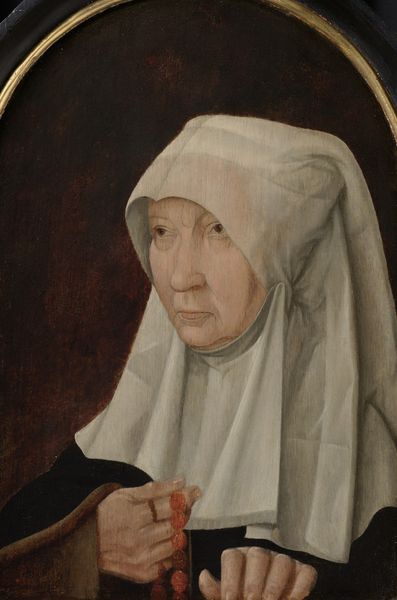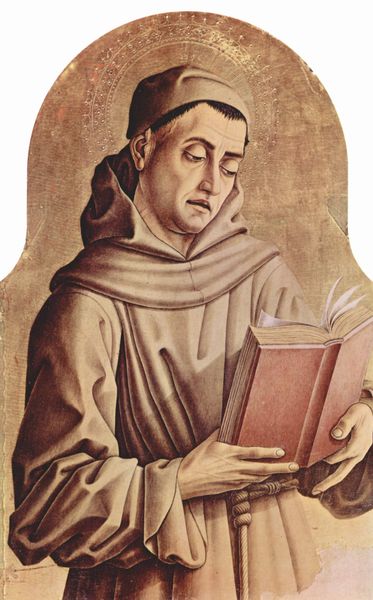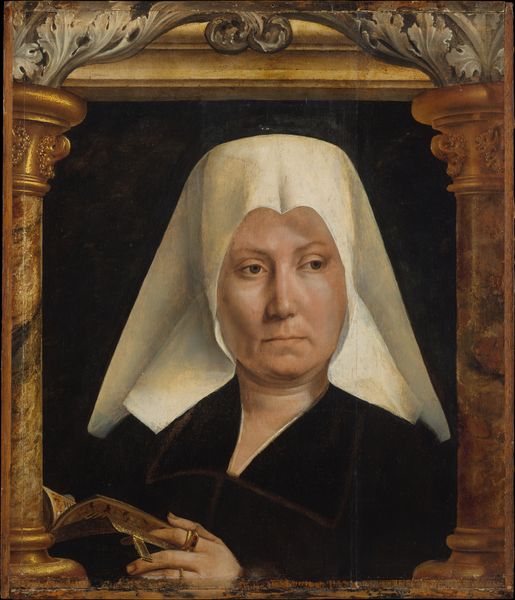
#
head
#
face
#
portrait
#
portrait reference
#
portrait head and shoulder
#
animal portrait
#
animal drawing portrait
#
nose
#
portrait drawing
#
facial portrait
#
forehead
#
portrait art
#
fine art portrait
#
digital portrait
Copyright: Tamara de Lempicka Estate LLC
Curator: Wow, what a stark image. It's confronting, almost… aggressively sad. Editor: Indeed. We're looking at "The Mother Superior" by Tamara de Lempicka, painted in 1935. Lempicka, celebrated for her Art Deco portraits of wealthy elites, here presents us with something quite different. Curator: Different is an understatement! It's stripped bare, almost devoid of that signature glamorous polish. You can practically feel the weight of… well, everything, in those drooping eyelids. Is that really a tear running down her cheek? It feels too deliberate, somehow. Like a spotlight on her vulnerability. Editor: Perhaps that's the intention. Lempicka painted this during a period of significant religious and social upheaval. Consider the historical context – the rise of fascism, the looming war. Religious orders, particularly, found themselves navigating increasingly precarious sociopolitical landscapes. This portrait becomes a window into a world on the brink. Curator: So, you see this less as personal sorrow, and more as… a symbol? A representative of the Church facing an uncertain future? I can get on board with that. But I still keep coming back to the face itself, its texture. Lempicka usually painted with such sleek, cool perfection, here the wrinkles and shadows, the actual humanity is laid bare. Editor: It is powerful, isn’t it? This portrait marks a stark shift in Lempicka’s body of work. She often imbued her subjects with an assertive strength, but here the vulnerability is almost disarming. I would suggest she humanized what can be a formidable institution. The raw emotion might stem from personal experiences. As for the historical circumstances and Lempicka's own feelings on religion, perhaps this image has become her confession, her acknowledgment that, yes, everything isn’t always glamorous or empowered. Curator: A confession painted onto canvas, a silent scream of uncertainty... Yes, that gives me something to really ponder. Editor: And perhaps, that raw and somewhat unexpected perspective is why we still pause before it today.
Comments
No comments
Be the first to comment and join the conversation on the ultimate creative platform.

